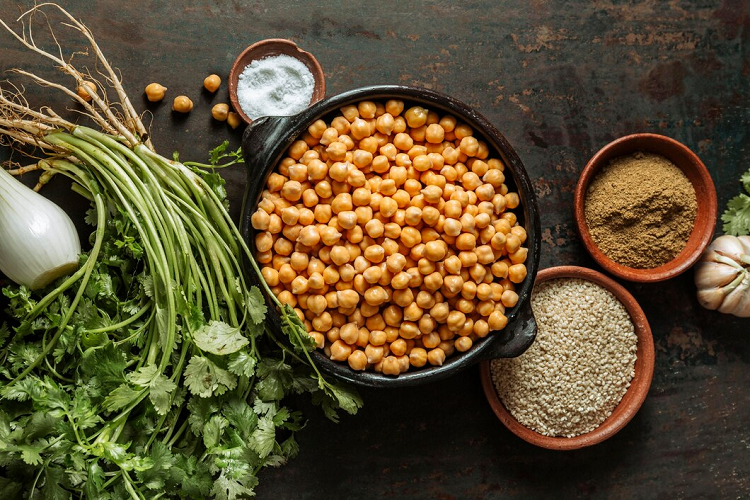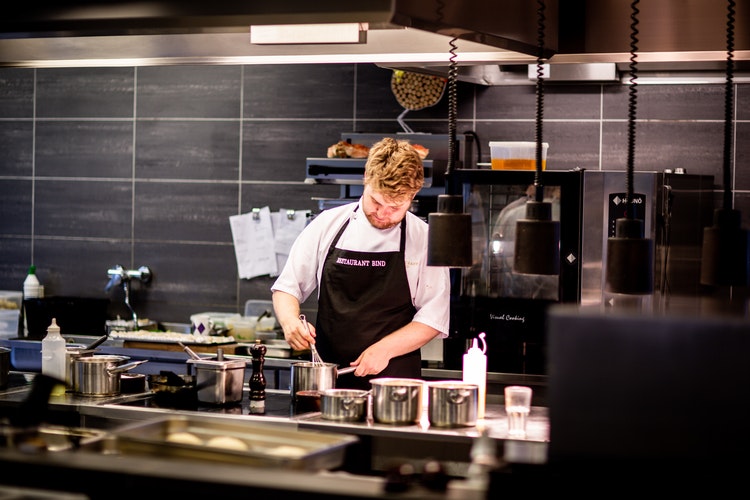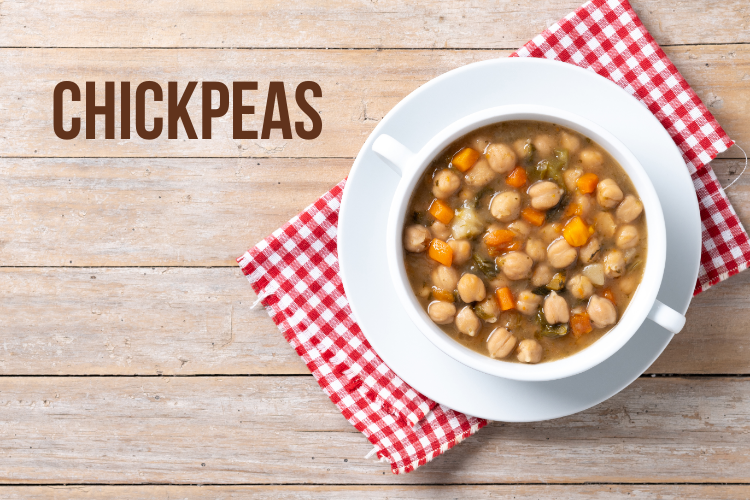If you are a food enthusiast, you must have heard of çeciir, or chickpeas, before. This versatile legume has been a staple in many cultures for centuries and is now gaining popularity in the Western world for its nutritional value and delicious taste. But what exactly is çeciir and why is it so popular? In this blog post, we will dive into the world of çeciir and explore all you need to know about this amazing legume.
What is Çeciir?
Çeciir is a small, beige-colored legume that is part of the Fabaceae family. It is widely cultivated in the Middle East, Africa, and the Mediterranean region, and has been a part of these cuisines for thousands of years. It is also known by different names in different parts of the world, such as garbanzo beans, ceci beans, and Bengal gram.
Çeciir stands as a testament to culinary diversity across the globe. This legume, scientifically known as Cicer arietinum, embodies not only nutritional richness but also culinary versatility, making it an indispensable ingredient in numerous cuisines.
Why Çeciir is So Popular?
Çeciir, also known as the “King of Spices”, has been a staple in many cuisines around the world for centuries. Its distinct flavor and aroma have made it a popular ingredient in various dishes, and its health benefits have only added to its popularity. But what makes çeciir so special and why has it stood the test of time?
Distinctive Taste
Çeciir is known for its strong and unique flavor. It has a warm, slightly sweet, and slightly bitter taste that adds depth and complexity to any dish. This flavor comes from the compound called curcumin, which is responsible for its vibrant yellow color as well. It is often used as a natural food coloring agent, making dishes visually appealing.
Medicinal Properties
It has been used in traditional medicine for centuries to treat various ailments, including digestive issues, skin problems, and even depression. Modern research has also shown that çeciir has anti-inflammatory and antioxidant properties, making it beneficial for overall health and well-being.
Versatility
It can be used in both savory and sweet dishes, making it a versatile spice that can be incorporated into a wide range of cuisines. It is a staple in Indian, Middle Eastern, and Southeast Asian cuisine, but it has also gained popularity in Western dishes in recent years.
Easily Accessible and Affordable
It is widely available in most grocery stores and is relatively inexpensive compared to other spices. This makes it a great option for those on a budget or those looking to add some flavor to their meals without breaking the bank.
Use in Beauty Products
It is used in skincare products for its anti-inflammatory and antioxidant properties, and its ability to brighten and even out skin tone. This has only added to its appeal and has made it a must-have ingredient in many beauty routines.
Social Media Impact
With the growing trend of food blogging and sharing recipes online, çeciir has become a popular ingredient in many viral recipes. Its vibrant color and unique flavor make for visually appealing and delicious dishes that are often shared and recreated by many.
Types of Çeciir
There are two main types of çeciir: desi and Kabuli.
Desi Çeciir
Desi chickpeas are smaller and darker in color, with a rougher texture. They are commonly used in Indian and Middle Eastern cuisine, where they are ground into flour to make dishes like falafel and hummus.
Kabuli Çeciir
Kabuli chickpeas are larger and lighter in color, with a smoother texture. They are mostly used in Western cuisine, where they are commonly found in salads and stews.
Origins and Cultural Significance
Originating from the Mediterranean region, Çeciir boasts a rich history dating back thousands of years. Its cultivation traces back to ancient civilizations like the Greeks, Romans, and Egyptians, who revered it for its nutritional benefits and culinary adaptability.
Throughout history, Çeciir has left indelible marks on various cultures and cuisines. From hearty stews in the Middle East to savory snacks in India and vibrant salads in the Mediterranean, its presence is ubiquitous.
Çeciir in Different Cuisines
Mediterranean Cuisine
In Mediterranean cuisine, çeciir plays a central role in dishes like Mediterranean chickpea salad, Greek chickpea stew, and Spanish chickpea and spinach stew. These dishes often incorporate olive oil, tomatoes, and fresh herbs for vibrant flavors.
Middle Eastern Cuisine
Middle Eastern cuisine features çeciir prominently in dishes like hummus, falafel, and ful medames. These dishes are enjoyed as appetizers, snacks, or main courses and are often served with pita bread, tahini sauce, or pickled vegetables.
Indian Cuisine
In Indian cuisine, chickpeas are used to prepare dishes such as chana masala, chole, and kadala curry. These flavorful dishes are seasoned with a blend of spices like cumin, coriander, turmeric, and garam masala, creating aromatic and satisfying meals.
Nutritional Value of Çeciir
Protein Prowess
One of the standout features of Çeciir is its high protein content, making it an excellent choice for vegetarians and vegans seeking alternative protein sources. With approximately nineteen grams of protein per one hundred grams, it rivals the protein content of meat while offering numerous additional health benefits.
Fiber-Rich Goodness
Çeciir is also a fantastic source of dietary fiber, crucial for maintaining digestive health and promoting satiety. Its high fiber content aids in regulating blood sugar levels and cholesterol, contributing to overall cardiovascular health.
Micronutrient Marvel
In addition to protein and fiber, Çeciir boasts a wealth of essential vitamins and minerals, including folate, iron, phosphorus, and manganese. These micronutrients play vital roles in various bodily functions, such as energy production, cell repair, and immune support.
Health Benefits of Çeciir
Heart Health
Consuming çeciir regularly may contribute to heart health due to its high fiber and low glycemic index content. Fiber helps reduce cholesterol levels, while the low glycemic index prevents sudden spikes in blood sugar, promoting cardiovascular health.
Digestive Health
The fiber content in çeciir also supports digestive health by promoting regular bowel movements and preventing constipation. Additionally, chickpeas contain resistant starch, a type of carbohydrate that acts as a prebiotic, nourishing beneficial gut bacteria.
Weight Management
Including çeciir in your diet may aid in weight management due to its satiating properties. The combination of protein and fiber helps you feel full for longer periods, reducing overall calorie intake and supporting weight loss or maintenance efforts.
Culinary Applications: From Hummus to Curries
Hummus: A Timeless Classic
Hummus, a creamy dip made from mashed chickpeas, tahini, lemon juice, and garlic, has gained international acclaim for its irresistible flavor and nutritional profile. Enjoyed as a dip, spread, or accompaniment, hummus epitomizes the versatility of Çeciir in culinary creations.
Exquisite Curries and Stews
In Indian and Middle Eastern cuisines, chickpeas take center stage in a myriad of flavorful curries and stews. Whether simmered in aromatic spices or combined with vibrant vegetables, chickpeas add depth and richness to these hearty dishes, satisfying palates and nourishing bodies.
Crunchy Snacks and Salads
Roasted chickpeas emerge as a popular snack choice, offering a satisfying crunch and a burst of flavor. Moreover, chickpeas lend their unique texture and nutty taste to refreshing salads, elevating them from simple sides to satisfying meals.
Culinary Tips and Tricks: Making the Most of Çeciir
Soaking and Cooking Techniques
To enhance digestibility and reduce cooking time, it is advisable to soak dried chickpeas overnight before cooking. Additionally, incorporating ingredients like baking soda during cooking can help soften chickpeas, resulting in a creamier texture.
Flavor Pairings and Seasonings
Experimenting with various flavor profiles and seasonings can elevate chickpea-based dishes to new heights. From smoky paprika and cumin to zesty lemon and fresh herbs, the possibilities are endless when it comes to enhancing the taste of Çeciir.
Sustainability and Çeciir Farming
Environmental Impact
Çeciir cultivation has a relatively low environmental impact compared to other crops. Chickpeas are drought-tolerant and require less water than many other legumes, making them suitable for cultivation in arid regions.
Farming Practices
Chickpeas are typically grown using sustainable farming practices such as crop rotation, which helps maintain soil fertility and reduce pest and disease pressure. Additionally, chickpea plants fix nitrogen in the soil, reducing the need for synthetic fertilizers.
Buying and Storing Çeciir
Tips for Buying Çeciir
When purchasing çeciir, opt for dried chickpeas or canned chickpeas without added salt or preservatives. Dried chickpeas can be soaked overnight and cooked according to your recipe, while canned chickpeas offer convenience and are ready to use.
Proper Storage Methods
Store dried chickpeas in an airtight container in a cool, dry place away from direct sunlight. Cooked chickpeas can be stored in the refrigerator for up to three days or frozen for longer-term storage. Canned chickpeas should be transferred to a sealed container and refrigerated after opening.
Embracing Çeciir in Your Culinary Journey
Whether you are a seasoned chef or an adventurous home cook, integrating Çeciir into your culinary repertoire opens doors to endless possibilities. From comforting soups to exotic spreads, this versatile legume invites exploration and creativity in the kitchen.
In conclusion, Çeciir transcends cultural boundaries and culinary traditions, offering a treasure trove of flavor, nutrition, and culinary inspiration. Embrace the wonders of Çeciir and embark on a culinary journey filled with delicious discoveries and wholesome delights.
FAQs about Çeciir
Are chickpeas and garbanzo beans the same thing?
Yes, chickpeas and garbanzo beans refer to the same legume, known scientifically as Cicer arietinum.
What are the different types of chickpeas?
There are two main types of chickpeas: Kabuli and Desi. Kabuli chickpeas are larger and have a smoother coat, while Desi chickpeas are smaller with a rougher coat.
Are chickpeas suitable for a gluten-free diet?
Yes, chickpeas are naturally gluten-free, making them an excellent choice for individuals with gluten sensitivities or celiac disease.
How can I incorporate chickpeas into my diet?
Chickpeas can be used in a variety of dishes, including salads, soups, stews, and even desserts. Try adding them to your favorite recipes for an extra boost of nutrition and flavor.
What are the health benefits of eating chickpeas?
Chickpeas are rich in protein, fiber, vitamins, and minerals, making them beneficial for heart health, digestive health, weight management, and more.
Can chickpeas help with weight loss?
Yes, chickpeas are low in calories and high in fiber and protein, which can help promote feelings of fullness and aid in weight loss efforts when incorporated into a balanced diet.




